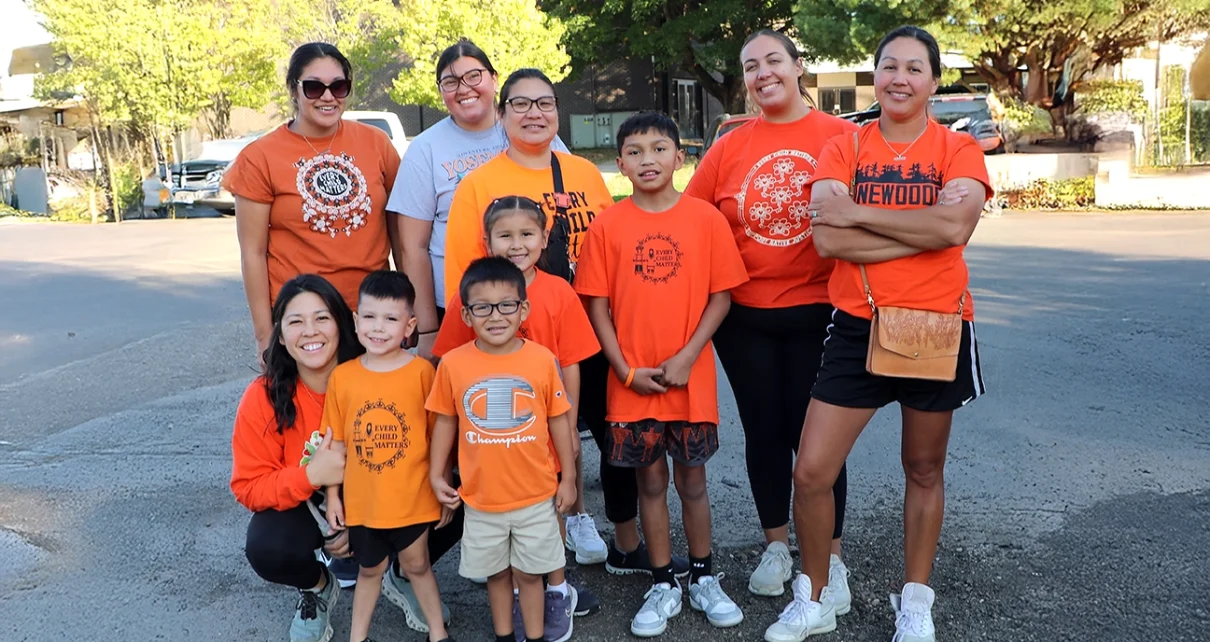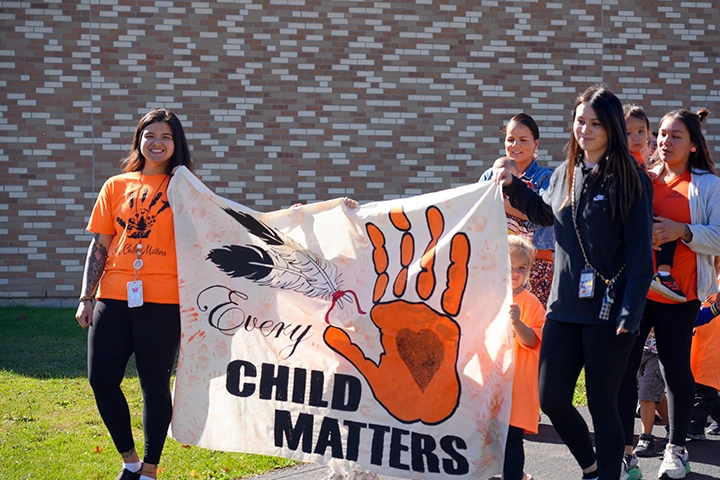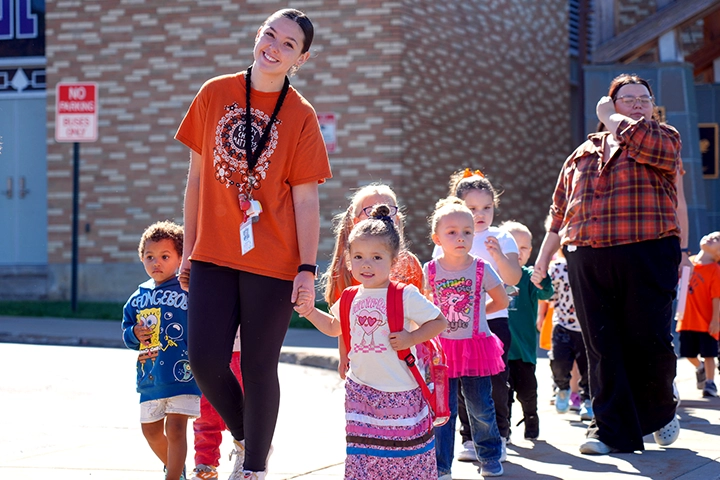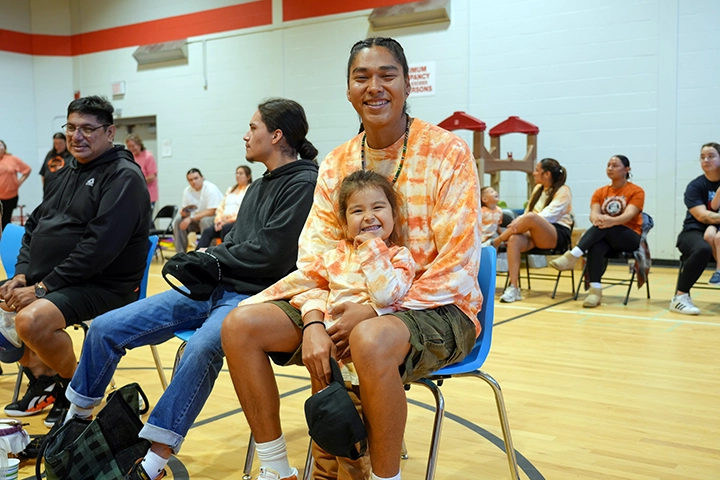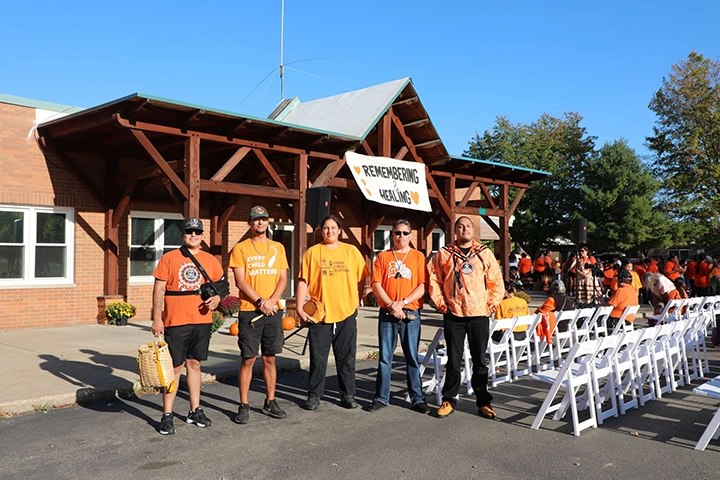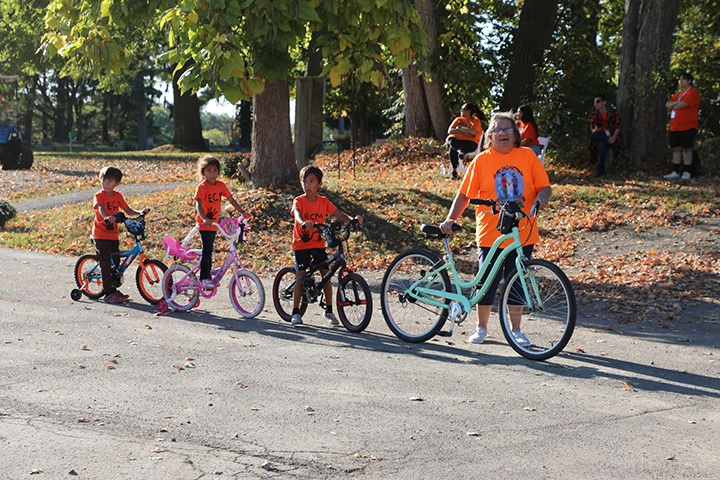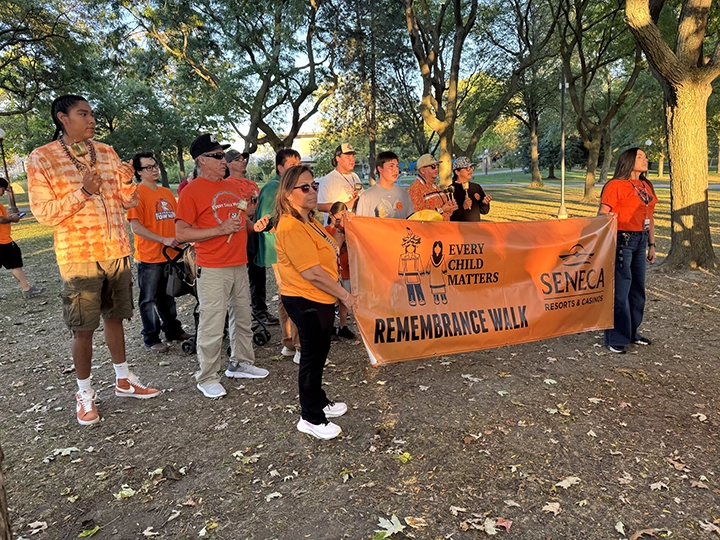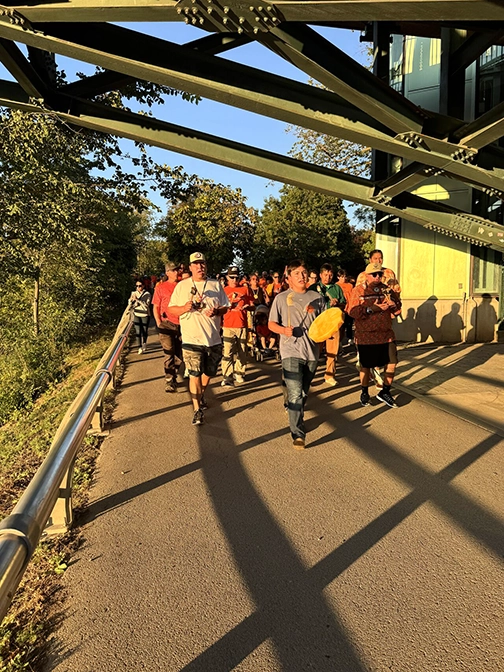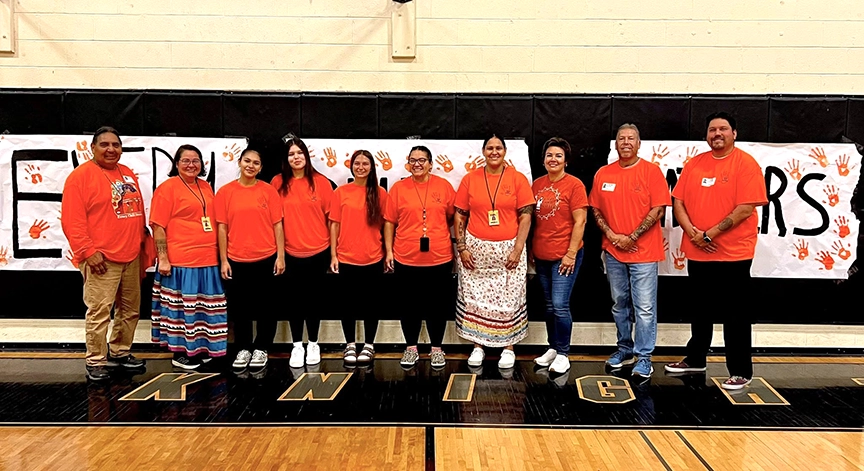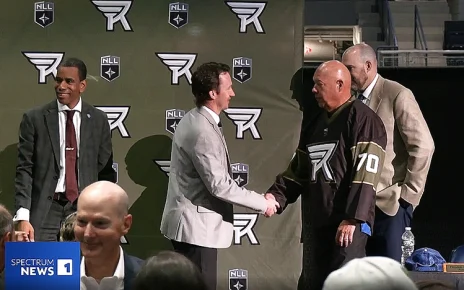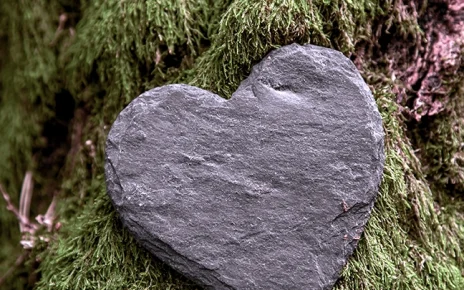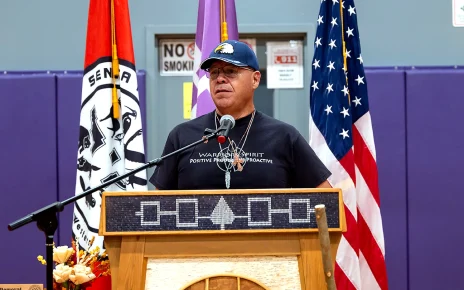On Tuesday, September 30, Seneca people across our territories walked together in orange — remembering the children who never came home and honoring the survivors who carry that strength within us today.
At the Seneca Arts & Learning Center on the Allegany Territory, students and staff held their annual Every Child Matters Walk & Social earlier in the day. Dressed in orange shirts, they walked in unity to raise awareness and uplift the stolen voices of those taken by the boarding school system. Events like these remind our youth of the strength of our Elders and the importance of keeping our stories, language, and identity alive.
On the Cattaraugus Territory, the community continued the Nation’s 5th Annual Every Child Matters Remembrance & Community Healing Walk. Together, walking the grounds of the former Thomas Indian School in Irving — where our ancestors were once forced to forget who they were. The path through those grounds holds heavy truth, but our steps carry healing. We spoke our language, sang our songs, and walked proudly as Seneca people — connected as families, friends, and generations.
“I walk to remember my oldest brother was part of that cycle of boarding schools. If the school had remained opened, I too could have become a survivor. I walk so we don’t forget how important is to take care of our children. They are our future. I walk as a reminder that we can learn from our past to make a better future for the faces yet to come,” -Mary Jacobs
In the evening, Seneca Resorts & Casinos team members joined Nation citizens and community supporters in Niagara Falls for their Every Child Matters Remembrance Walk. Over one hundred people walked from Seneca Square to Prospect Point, all wearing orange in remembrance and solidarity.
At Silvercreek High School, three Seneca seniors saw a vision come to fruition that they have been working on since last year for the New York State Education Department Seal of Civics Project
Amirya Warrior, Hailie Rybij, and Skyla Gates wanted to bring awareness and education about the Thomas Indian Residential Boarding School that was located on the Cattaraugus territory. They organized Orange Shirt Day for their school, facilitated a school wide walk, and mini assembly for all students from pre-K to 12th grade.
The three seniors realized the importance of educating students, staff, and the community of the atrocities committed by residential schools and the trickle-down trauma that still affects Indigenous people to this day. Amirya, Hailie, and Skyla took the opportunity to educate and bring something special to the community/district, so they worked with mentors both in the school and at the Seneca Nation to hold a Remembrance Walk. They invited community members, including their own family to portray the local impact of residential schools
Each of the three students took turns to speaking to groups, and read “Every Child Matters” by Phyliss Websted to the younger classrooms. Two guest speakers Joyce Gates and her son Todd Gates (Skyla’s family) shared school experiences. Photographs of the Thomas, Indian residential boarding school hung on the wall as they walked around the gym. Traditional Seneca songs and dances were enjoyed by the elementary students. All the children in the school district were given an orange T-shirt that was designed by Amirya, Hailie, and Skyla.
This year-long project will continue with plans to install a Haudenosaunee flag and a SNI flag in the gym and hold a fundraising for a flag pole outside the school.
Not only are they advocates, they are also each completing Seal of Biliteracy projects: Amirya – a guide for new mothers to be able to speak/teach their babies Seneca; Skyla – an Uno game-translated to Seneca; and Hailie – a children’s book in Seneca, translated to English. They are showing amazing capabilities as leaders and changemakers.
Across Allegany, Cattaraugus, and beyond, our people continue to stand together — healing through remembrance, and reminding one another that the children who were taken are not forgotten.
AGWA:IWA’HASDE’, ÖGWAYA’DAGÖHSOTA’
(We Are Resilient, We Remain.)
Why Do We Wear Orange?
Phyllis’s family didn’t have much, out whatever she wanted to wear so when her grandma let her pick for her first day of school, her eyes locked on an orange shirt hanging prettily from the store rack. It was shiny, had laces on the front, and made her feel as excited as she felt about going to the new St. Joseph Mission School.
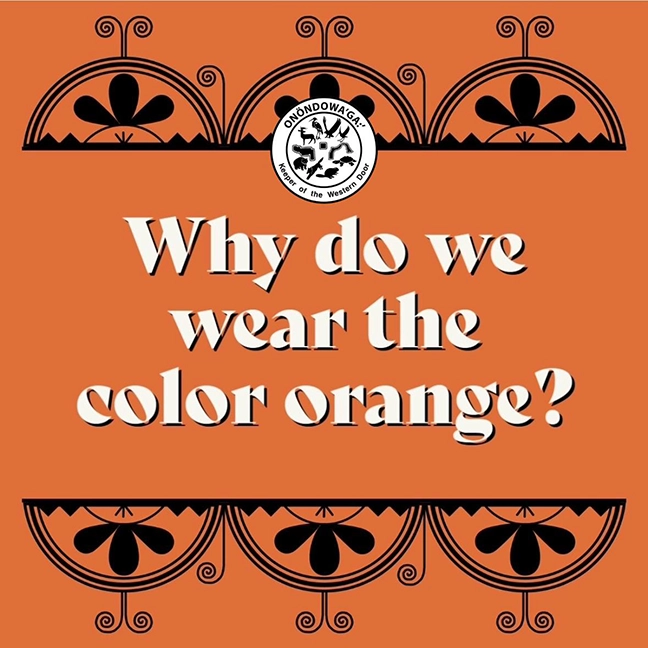
When she arrived to the school near Williams Lake, B.C. as a 6-year-old in the Fall of 1973, Phyllis looked forward to what her new experience would be like. Would she make friends? Learn new things? Would she be happy there? Her questions were answered when she walked through the doors. Her clothes and belongings were taken from her, including the shiny orange shirt. She never got to wear it again.
Though there briefly, her time at the St. Joseph Mission School resulted in Phyllis’s long healing journey to unlearn the erroneous things she felt about herself. Phyllis (Jack) Webstad, Northern Secwpemc of the Stswecem’c Xgat’tem First Nation, now serves as Executive Director of the Orange Shirt Society. Phyllis tours the U.S. and Canada sharing her story to shed light on the history of residential schools and bring awareness to the impact they’ve had on indigenous communities. On Orange Shirt Day, we wear orange to bring volume to the voices lost, found, and still healing.

